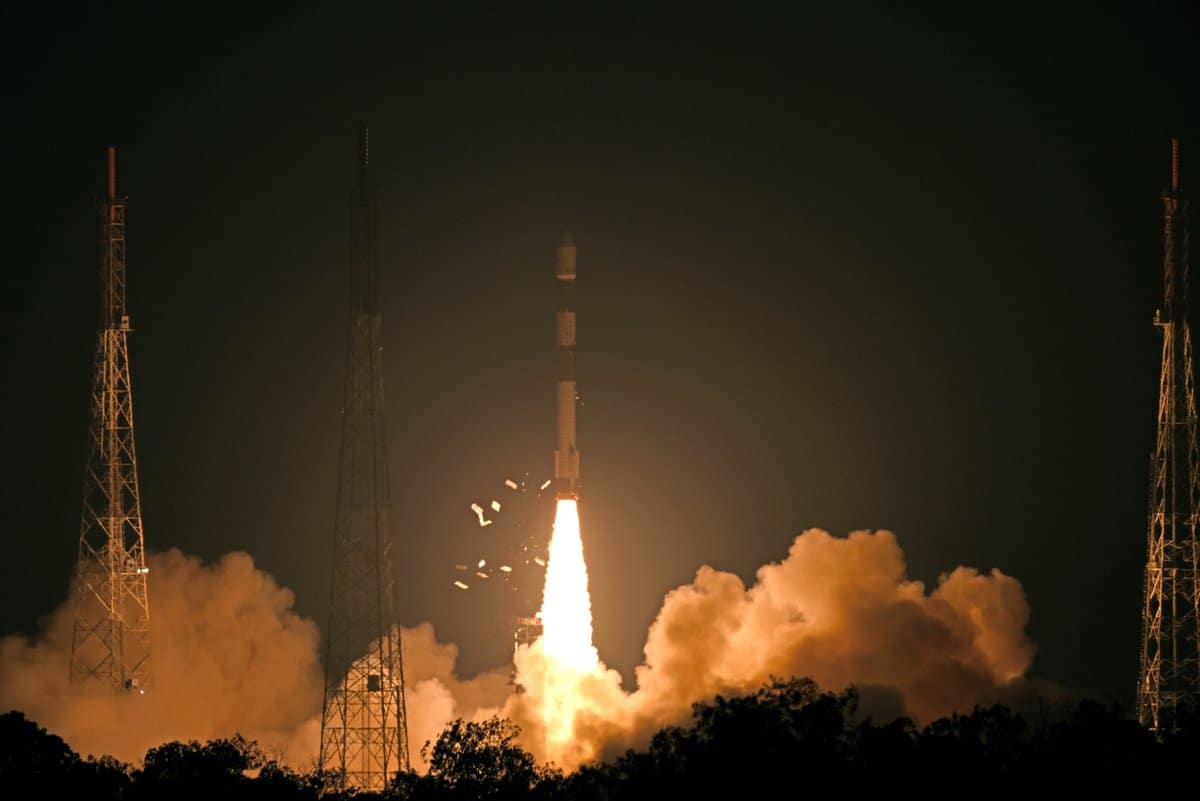What’s in today’s article:
- About RISAT Satellites (Origin, Purpose)
- RISAT-2 (Purpose, Contributions, etc.)
- News Summary
Why in news?
- ISRO’s radar-imagining satellite Risat-2 that re-entered the Earth’s atmosphere and splashed in the Indian Ocean on October 30 was India’s first dedicated ‘spy’ or reconnaissance satellite.
About RISAT series of Satellites:
- Radar Imaging Satellite or RISAT is a series of Indian radar imaging reconnaissance satellites built by the Indian Space Research Organisation (ISRO).
- The first satellite, named RISAT-2, was launched in 2009.
- It was bought from Israel for USD 110 million largely for surveillance purposes.
- In 2012, ISRO then launched what was India’s first indigenous all-weather radar imaging satellite, known as RISAT-1.
- RISAT-1 provided all-weather surveillance using synthetic aperture radars (SAR).
- Before the launch of RISAT-1, India depended on images from a Canadian satellite as the existing domestic remote sensing spacecraft was not able to take pictures of the earth during cloud cover.
About RISAT-2:
- RISAT-2 was India’s first satellite with a synthetic aperture radar (SAR), which possesses 24-hour, all-weather monitoring capability.
- With a bid to boost its intelligence acquisition after the 26/11 terror attacks on Mumbai (2008), India had acquired a high-precision spy satellite from Israel.
- It was a 300kg all-weather spy satellite put into the orbit, to help security agencies keep a vigil on the country’s borders round-the-clock, especially hostile neighbours and help in anti-infiltration and anti-terrorist operations.
- Risat-2 provided beneficial payload data for over 13 years.
Significant Contribution:
- Images from the satellite helped security and intelligence agencies plan the surgical strike in 2016 on terror launchpads in Pakistan-Occupied Kashmir (PoK) and the Balakot aerial strike in February, 2019.
- The satellite was also used in rescue missions as it was to search and locate the wreckage of the helicopter crash that claimed the life of the then Andhra Pradesh CM Y S Rajasekhara Reddy and fellow passengers in September, 2009.
News Summary:
- India’s radar-imaging satellite — RISAT-2 — on 30 October made an uncontrolled re-entry into the Earth’s atmosphere at the predicted impact point in Indian Ocean near Jakarta, Indonesia.
- For an initial designed life of 4 years, RISAT-2 Satellite carried 30 Kg fuel.
- On re-entry, there were no fuel left in the satellite and hence there are no contaminations or explosion by fuel is expected.
- Studies confirmed that the pieces generated due to aero-thermal fragmentation would not have survived re-entry heating and hence no fragments would have impacted on Earth.
Last updated on June, 2025
→ UPSC Notification 2025 was released on 22nd January 2025.
→ UPSC Prelims Result 2025 is out now for the CSE held on 25 May 2025.
→ UPSC Prelims Question Paper 2025 and Unofficial Prelims Answer Key 2025 are available now.
→ UPSC Calendar 2026 is released on 15th May, 2025.
→ The UPSC Vacancy 2025 were released 1129, out of which 979 were for UPSC CSE and remaining 150 are for UPSC IFoS.
→ UPSC Mains 2025 will be conducted on 22nd August 2025.
→ UPSC Prelims 2026 will be conducted on 24th May, 2026 & UPSC Mains 2026 will be conducted on 21st August 2026.
→ The UPSC Selection Process is of 3 stages-Prelims, Mains and Interview.
→ UPSC Result 2024 is released with latest UPSC Marksheet 2024. Check Now!
→ UPSC Toppers List 2024 is released now. Shakti Dubey is UPSC AIR 1 2024 Topper.
→ Also check Best IAS Coaching in Delhi

























